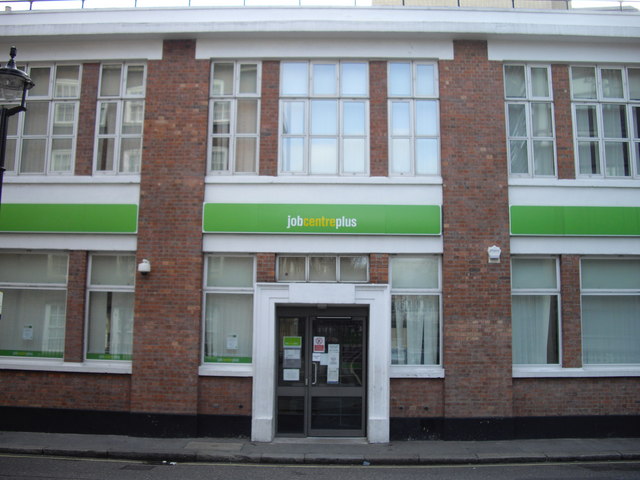Unemployment has risen across Greater Manchester for another year, with newly released figures from the Office for National Statistics (ONS) revealing stark disparities between boroughs.
The region’s overall unemployment rate now stands at 4.7%, higher than both the North West average of 4% and the United Kingdoms figure of 3.8%.
This means around one in 21 working-age residents in Greater Manchester is officially unemployed – and in some boroughs, this figure is closer to one in 16.
But behind this regional figure lie deeper inequalities, with some boroughs facing far more severe labour market pressures than others – particularly Oldham and Tameside.
Oldham: Among the most challenged boroughs in Greater Manchester
Across several key employment indicators, Oldham is currently one of the most affected boroughs in Greater Manchester.
Its unemployment rate rose from 4.8% in 2023 to 5.4% in 2024, now holding the second-highest unemployment rate in the city-region.
More concerning, however, is that Oldham also records the highest claimant count proportion at 7.3% – representing those actively claiming unemployment-related benefits.
In addition, it shares the region’s highest economic inactivity rate at 28.3% (joint with Bolton), which refers to people who are not in work and not currently seeking employment – often due to long-term illness, caring responsibilities or disengagement from the labour market.
Taken together, these figures suggest the challenges in Oldham go beyond job availability.
They point to deeper structural barriers such as health inequalities, lack of access to training or childcare, skill gaps and persistent economic exclusion.
For Sam Miller, 25, from Oldham, these statistics reflect his personal experience. He said: “It’s hard not to feel like our generation is at risk of being left behind.
“I was unemployed for one year and it was the worst point of my life.
“There was this constant guilt that crept in, like you should be trying harder even though you’re doing everything you can.
“Socially, it was really lonely. Everyone else was out working, and you’re just stuck at home doing nothing – but I also couldn’t even go out and do things because I had no money.”
He added: “It was embarrassing having to explain to your mates why can’t you come out again. You would laugh it off but it stung.”
Council-led initiatives like Get Oldham Working offer residents support with employment, training and apprenticeships.
Fida Hussain, Cabinet Member for Enterprise at Oldham Council, said: “Since its launch in back in 2013, Get Oldham Working has helped more than 16,000 residents into jobs, apprenticeships and work experience opportunities.”
She added: “In the past year alone, through the Restart programme, 203 people have found work, with 116 achieving sustained employment of over six months. The team are also leading the way in tackling in-work poverty and supporting residents with health barriers.
“And since January 2024, through the Support to Succeed programme the team has engaged 382 residents, helping 16 into employment and delivering 24 additional positive outcomes. The programme also offers tailored support, mental health access, and budgeting help for better financial management.”
She concluded: “However, we know there is still much to do and we continue to work with our partners and different services to create more good quality sustainable employment.
“Our Get Oldham Working service is about more than just jobs and figures. It’s about people, families, and communities. Every job filled, every career supported is a step towards creating a stronger and better Oldham.”
Tameside: The biggest spike in unemployment across Greater Manchester
Tameside has seen the sharpest year-on-year increase in unemployment from 3% in 2023 to 4.5% in 2024, a 50% rise in just one year.
It also ranks lowest in job density in Greater Manchester with just 0.5 jobs per working-age adult – that’s 73,000 jobs for a working population of 145,000.
The shortage of local jobs puts added pressure on Tameside’s residents – especially young people trying to enter the workforce.
Jack Moss, 22, from Tameside, said the reality of unemployment is widely misunderstood.
He said: “I wish people understood that being unemployed isn’t about being lazy. Most young people I know are doing everything they can – It’s just a really difficult market right now and sometimes you just need someone to give you a proper chance.”
Moss, who worked in quality assurance for two years, has had only four interviews in nine months, receiving no response or clear feedback.
He added: “It’s been difficult – financially, mentally and socially. You miss out on things, you feel more isolated and it does take a toll on your confidence.
“Amongst my friends it’s quite similar – most of them have faced period of unemployment too or had to settle for jobs they’re overqualified for.”
“Finding jobs locally has been tough. Manchester has opportunities but a lot want very specific experience or are extremely competitive.”
Moss emphasised that young adults in particular are disproportionately affected by a difficult labour market, lacking experience often required for entry-level positions.
According to the Guardian, the number of 16- to 24-year-olds in the UK who were not in education, employment or training (NEET) rose to 987,00 between October and December 2024, the highest in over a decade.
With both Oldham and Tameside facing steep economic challenges, the statistics show that Greater Manchester’s unemployment crisis is not just about numbers.
Tameside Council did not respond for comment.
Feature image: from geograph.org.uk. By Paul Farmer




